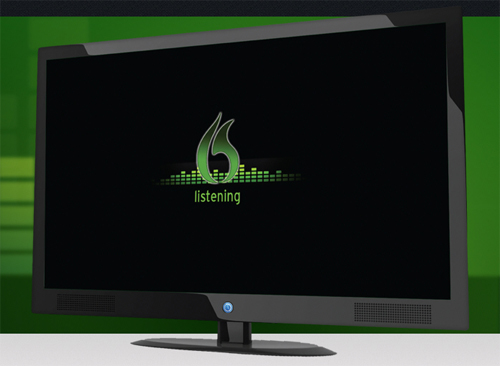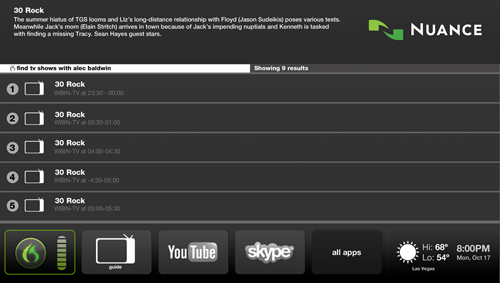It’s frustrating when you can’t find the remote, especially on a weekend when you simply want to be lazy. In an effort to be thinner than televisions have been in recent years, the new models set for 2012 are now sporting thinner bezels, some nearly invisible, suggesting it’ll be hard to find the old fashioned buttons on these sets too. Don’t bother getting up from the couch, voice recognition promises to solve everything.
No one is sure if the technology will truly take-off, but every major television manufacturer is dabbling with it just in case, and while the likes of Apple, Google, and Microsoft all have their own take on the concept, it’s the name of a much smaller company, Nuance, that is giving us our first defining experience with televisions that listen and obey.
A television powered by Nuance’s technology can respond to more than the usual one-word barked commands popular amongst toys and telephone directories, it can take directions through questions. “When is Ellen on?” “What’s playing on Channel 16?” and “Find me movies starring Bruce Willis” will all trigger a search through a programming guide for matches that are then displayed on-screen. The first demonstrations reveal that it’s a system that works very well.
Nuance doesn’t make televisions, for decades they have worked on getting computers to convert our speech into text, the hope being that people will simply dictate documents and e-mails. Although they came very close to 100% accuracy, the idea of still having to look for the occasional typo or mistake puts most people off of the idea. Using that same system to control a television, where the vocabulary is much smaller, means it works like magic.
It also means that you can use your voice to do more than change channels and the first televisions with the technology will also let you tap into more sophisticated features, such as sharing favourite shows to friends on Facebook, dictating short text messages, or placing voice calls using Skype.
It’s Nuance’s technology used by LG for their new Cinema 3D televisions, where voice recognition is being packaged with a special motion-controlled remote, and it’s their technology used by Samsung with new sets that will also include an Infrared accessory for extending the voice controls to include a cable or satellite box, where most channel changes are made.
It’s partly their technology that powers Siri, Apple’s voice recognition software in their iPhone 4S and it’s their technology again that’s used by Celestron for their upcoming home automation installations, allowing you to control lights, blinds, and other home systems in the same way.
At the industry’s biggest showcase event, the Consumer Electronics Show, Nuance unveiled a special package called Dragon TV that would allow any TV manufacturer, big or small, to add their technology to their models. This has the potential of creating an industry standard where all televisions are spoken to and commanded the same way, regardless of brand, long before the big names get a chance to draw up sides and start a format war. In my opinion this was the show’s biggest story.
Voice recognition is important beyond its novelty. The future of technology will be the way it can use all the personal information we supply our devices and accounts to relate to us. With more powerful computing power, tomorrow’s computers will be able to analyze our lives for patterns and create services that react and customize their settings and features to our personal whims. This will require us to interact with such services in more sophisticated ways. Forget the mouse, forget the touchscreen. When you’re dealing with a computer that seems to think, seems to know you intimately, you need to able to talk with it.
As the biggest screen, the biggest “face” representing all the connected technology we own in our lives, our televisions are primed to offer us the first human-like experience of dealing with your home computer like a person. Getting them to listen is just the first step in a long journey we can’t even begin to comprehend.






